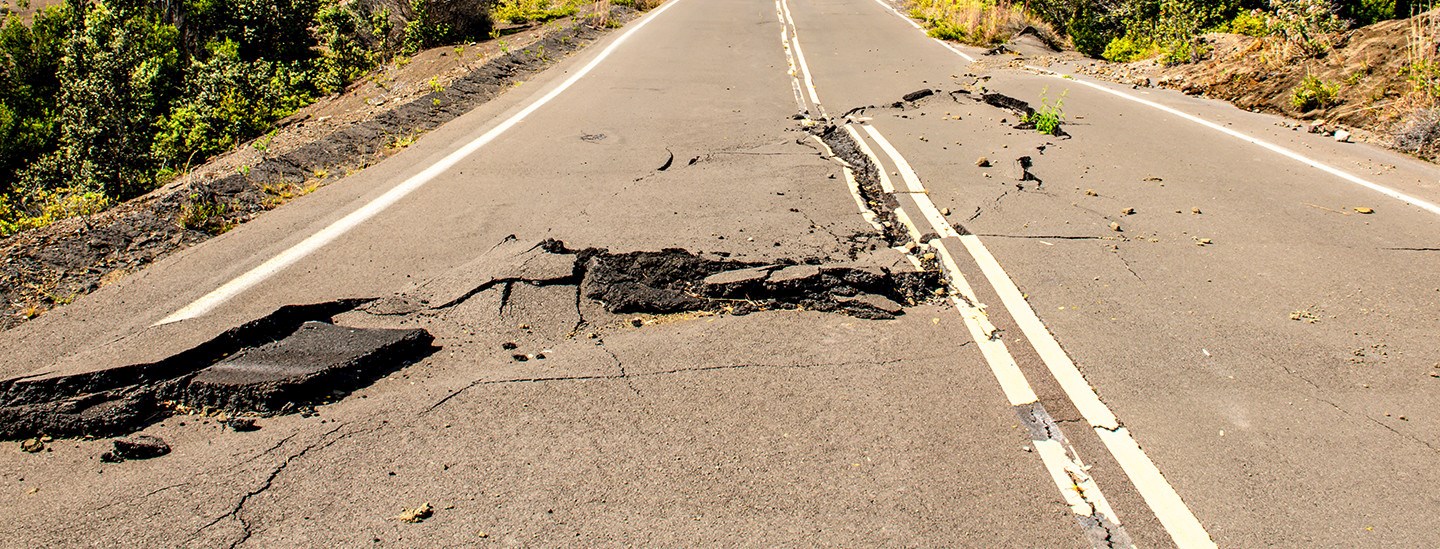Earthquakes are a sudden, rapid shaking of the ground caused by shifting rocks underneath the Earth’s surface. Earthquakes can cause fires, tsunamis, landslides or avalanches. While earthquakes can happen anywhere, in the U.S., much of the West Coast is at a higher risk, including, California, Hawaii and Washington.
Because earthquakes are largely unpredictable, having an emergency preparedness plan that you review annually for your home will help your family be ready for any natural disaster, including earthquakes. This earthquake preparedness guide will help you understand the risks and prepare you in safeguarding your home and property against an earthquake.
- Before an Earthquake Occurs: Review your Policies and Coverages
- Pre-Planning: Preparing your Home & Property before an Earthquake
- Sheltering During an Earthquake
- Filing an Insurance Claim due to Earthquake Damage
Before an Earthquake Occurs: Review your Policies and Coverages
If you live near an area prone to earthquakes, you must always be prepared. In anticipation of such an event, it is never too early to contact Gallagher and ensure you have the appropriate coverage, update your current property information, and understand what is covered with your current policy.
Pre-Planning: Preparing your Home & Property before an Earthquake
The best time to prepare for an earthquake is before one hits. There are a few things you can do to minimize risk of injuries amidst an earthquake:
- Secure heavy items like bookcases, refrigerators, televisions and objects that hang on walls.
- Store heavy breakable objects on low shelves.
- Consider making improvements to fix structural issues that could cause your building to collapse in the event of an earthquake.
Create an Earthquake Emergency Plan and Kit
Before an earthquake strikes, we recommend creating a personal emergency earthquake plan using the bulleted list below to ensure you and your family are prepared. We recommend the following as essential emergency elements to create and review on an annual basis:
- Create an Emergency Kit. Maintain an emergency supply kit that will sustain you and your family for a 72-hour period. The American Red Cross has guidelines on how to build a survival kit.
- Communicate with family members. In case you are not together when an earthquake begins, have a plan on how to reach each other. Texts are faster than phone calls and keeping important numbers stored in your wallet is essential.
- Practice first aid skills and emergency response actions. Attend training classes and practice response skills so you know how to administer first aid to any injured parties before professional help arrives.
- Secure important documents. Keep all important documents, such as legal papers, birth certificates, marriage license, financial papers and insurance policy information in a safety deposit box or fireproof and waterproof box.
Sheltering During an Earthquake
When you feel the start of an earthquake, you will not have much time to react. You must drop to your hands and knees, cover your head and neck and then hold on to something sturdy while the earthquake continues. Follow the steps below to keep you safe no matter where you are:
- If you are home:
- In bed: Turn face down and cover your head and neck with a pillow.
- In a room: Stay in and do not run outside. Crouch under a large object and protect your head and neck. Make sure to avoid doorways.
- If you are in a vehicle, pull over and stop. Set your parking brake. Put your head down lower than the windows, and cover your head and neck with your hands.
- If you are outdoors, crouch in a spot away from buildings and other large objects. Try to find cover and protect your head and neck.
Filing an Insurance Claim due to Earthquake Damage
If you suffered damage as a result of the earthquake, it is best to notify your insurance carrier to begin your insurance claim. It is important that your claims handler receive this information as quickly as possible so they can begin the claim resolution process. If you need assistance reporting your insurance claim, please contact your Gallagher advisor.
Claims Contacts for Home & Property
Starting an Insurance Claim
In order to initiate an insurance claim, you will need to provide as much detail as possible to your claims handler. The following is recommended:
- Photographs and/or video of the damage are extremely helpful.
- A preliminary list of damages.
- Secure your location(s) to prevent further loss and begin to sort damaged items from the undamaged items.
Claims Process for Insurance: What to Expect
Throughout the claim investigation process, you may have various coverage-related questions. Please reach out to your Gallagher advisor with specific policy and claim questions. During this high-volume claim reporting period, you should anticipate the following:
- Initial contact may take some time. Some insurers may use adjusters under contract, so the adjuster’s contact information may appear different than expected.
- Limited access to affected areas.
- Competition for labor and materials will be high, which may impact the timeframe and costs associated with repair and remediation.
- Working closely with your claims adjuster. If you have questions regarding the resolution process, Gallagher is here to assist and ensure you are in control of the claim progress.
Your insurance company’s website will contain important information about how to handle claims and manage losses. We have listed many insurance companies in the event you do not have the contact information readily available.

